I am using this op-amp circuit to buffer voltage (0-5V) received from MCU. Resistors at the output are used to limit the current controlling the solid-state relay. However, (Vin) coming from MCU is noisy and as a consequence (Vout). This makes the operation of the SSR unstable. How can I reduce or avoid this noise. Vin is an on-off square signal of maximum pulse duration of 20ms, to switch the SSR on and off.
Edit:
A view of the PIC circuit is given below, Vin is taken from A0 pin. Next, a view of the noisy Vin signal taken from Oscilloscope is shown. And a zoomed view of this signal at the high-to-low change is also given. I am sorry for combining all images in a one, because I am not able to attach more than two images in this question.
